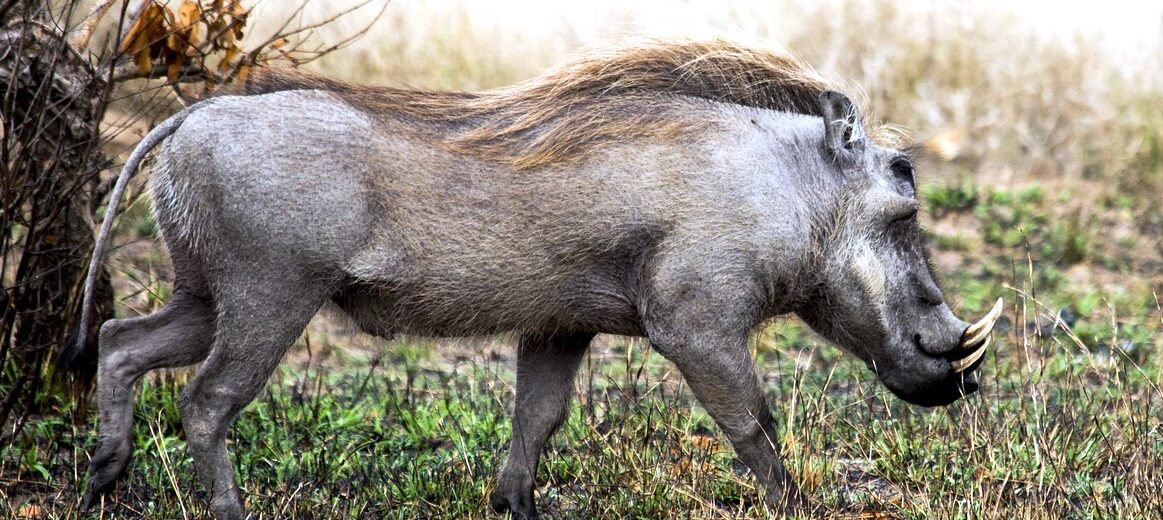
The warthog can be found in Africa’s southern Sudan and southwestern Ethiopia, in savanna woodland and grasslands. They aren’t picky about what they call home either. These critters will typically forgo digging their own burrow, instead inhabiting abandoned aardvark burrows. They also partake in a symbiotic relationship with mongooses.
First the Stats…
Scientific name: Phacochoerus
Weight: Up to 330 lbs
Length: Up to 5 feet
Height: Up to 3 feet, at the shoulder
Lifespan: Up to 20 years
Now on to the Facts!
1.) Warthogs have 2 pairs of tusks. The upper tusks are longer and curve toward each other. They use their tusks for self defense.
2.) When in their acquired burrows they will sleep with their heads facing outward, using their sharp tusks as a defense.
3.) A warthog will keep their tails in the upright position when running.
4.) They are found in moist and arid savannas.
5.) Being omnivores (eat both plant and animal matter) warthogs eat grass, roots, tree bark, berries, and even carrion (dead animals).
But wait, there’s more on the warthog!
6.) The warthog has poor eyesight, but an excellent sense of smell and hearing.
7.) Warthogs produce a variety of sounds. During the mating season, males make grunting noises. When threatened, warthogs squeal loudly to inform other members of the sounder (a group of warthogs) of pending danger.
Did you know…?
A warthog can run up to 35 mph!
8.) They live in smaller groups composed of females and their offspring. Males are solitary. They only join the group during mating season.
9.) The warthog has several predators including lions, cheetahs, African painted dogs, leopards, hyenas, and even eagles.
10.) A warthog’s “warts” are not really warts at all, but rather thick growths of skin.
Now a Short Warthog Video!
Also, check out the Critter Science YouTube channel. Videos added frequently!
Want to suggest a critter for me to write about? Let me know here.



